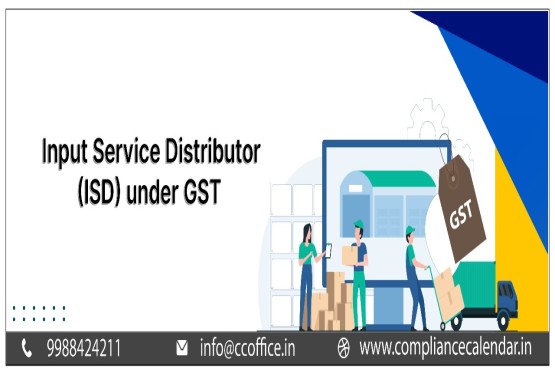Section 194Q of Income Tax Act was introduced by the Finance Act, 2021 and became effective from July 1, 2021. This section deals specifically with the TDS (Tax Deducted at Source) on the purchase of goods. The provision mandates that a buyer who meets specific turnover criteria must deduct tax at the time of purchasing goods from a resident seller when the transaction value exceeds a defined threshold. The primary aim of Section 194Q is to ensure better tax compliance and traceability of large transactions. This article provides a detailed explanation of Section 194Q of Income Tax Act, its applicability, calculation method, exceptions, and more.
Budget 2025 Update on Section 194Q
In the Union Budget 2025, a significant change was announced—Section 206C(1H), which earlier dealt with Tax Collected at Source (TCS) on the sale of goods, has been omitted starting from the financial year 2025-26. With this amendment, the overlapping provision between Section 194Q and 206C(1H) is removed. From now on, only TDS Deduction under Section 194Q of Income Tax Act will be applicable on purchases exceeding Rs. 50 lakh.
Applicability of Section 194Q of the Income Tax Act
Section 194Q is applicable to any buyer who is responsible for making payment to a resident seller for the purchase of goods. This section applies only when the following conditions are satisfied:
1. The buyer's turnover, gross receipts, or sales exceed Rs. 10 crore in the financial year immediately preceding the year in which goods are purchased.
2. The purchase value from a single seller exceeds Rs. 50 lakh in the current financial year.
3. The seller must be a resident of India.
This means that only large-scale buyers are liable to deduct TDS under this section when they engage in high-value transactions with resident sellers.
TDS Rate under Section 194Q of Income Tax Act
As per the provisions of Section 194Q, the buyer must deduct TDS at the rate of 0.1% on the amount exceeding Rs. 50 lakh. This rate is applicable only when the seller provides a valid PAN (Permanent Account Number). If the seller fails to furnish their PAN, the buyer must deduct TDS at a higher rate of 5%.
Example: If a buyer purchases goods worth Rs. 70 lakh from a single seller in a financial year, the TDS will be applicable on Rs. 20 lakh (i.e., Rs. 70 lakh - Rs. 50 lakh). TDS amount will be Rs. 20,000 (0.1% of Rs. 20 lakh) if PAN is furnished.
Calculation of TDS under Section 194Q
The buyer needs to calculate the total purchase value from each seller during the financial year. Once the total exceeds Rs. 50 lakh, TDS is to be deducted only on the amount exceeding this limit.
Example: A buyer makes three purchases of Rs. 20 lakh each from a seller in a financial year. The total purchase becomes Rs. 60 lakh. Now, TDS is to be deducted only on Rs. 10 lakh at 0.1%, which amounts to Rs. 1,000.
Time of Deduction of TDS
TDS Deduction under Section 194Q of Income Tax Act must be made at the earlier of the following events:
1. When the amount is credited to the account of the seller.
2. When the payment is actually made.
This includes cases where the buyer credits the amount to a ‘suspense account’ or any other account that represents the liability to pay the seller. Therefore, even if the buyer has not paid the seller but has accounted for the liability, TDS is applicable.
TDS Deposit Due Date
Once the TDS is deducted, the buyer must deposit it with the government. The due date for TDS deposit is as follows:
• On or before the 7th day of the following month in which TDS is deducted.
• For the month of March, TDS can be deposited till April 30.
TDS Return: Form 26Q
The buyer is required to file a quarterly TDS return using Form 26Q. The due dates for TDS return filing are:
• For April to June quarter: July 31
• For July to September quarter: October 31
• For October to December quarter: January 31
• For January to March quarter: May 31
Exceptions to Section 194Q of Income Tax Act
There are certain exceptions where TDS under Section 194Q is not required:
1. If the transaction is already subject to TDS under any other section like Section 194O (applicable for e-commerce).
2. Transactions with non-resident sellers.
3. Where the total purchase from a seller is less than Rs. 50 lakh in a financial year.
4. If the buyer’s turnover in the preceding financial year is below Rs. 10 crore.
5. When TCS is applicable under any provision except Section 206C(1H), which has now been omitted.
Impact on GST
• While determining the Rs. 50 lakh threshold, the turnover should be calculated excluding GST.
• TDS should be deducted only on the value of goods excluding GST.
Non-Furnishing of PAN by Seller
If the seller fails to furnish their PAN, the buyer must deduct TDS at the rate of 5% instead of the standard 0.1%.
It is important to note that while the general rate for non-furnishing of PAN is 20%, in the case of Section 194Q, a lower rate of 5% is prescribed.
Penalties for Non-Compliance
Failure to comply with the provisions of Section 194Q can attract serious consequences:
• Disallowance of 30% of the purchase value while computing taxable income.
• Interest and penalties for late payment or non-payment of TDS.
Section 194Q Declaration Format
Sellers may provide a declaration on their letterhead confirming that they are not liable to collect TCS under Section 206C(1H) and that the buyer may deduct TDS under Section 194Q. The declaration typically includes:
1. A confirmation that the seller will not collect TCS under Section 206C(1H).
2. PAN details.
3. A confirmation that the seller has filed income tax returns for the last three years.
Important Points to Remember About Section 194Q of the Income Tax Act
• Applies only to buyers with turnover above Rs. 10 crore.
• Applicable when purchases from a resident seller exceed Rs. 50 lakh in a financial year.
• Deduction at 0.1% if PAN is furnished; 5% if PAN is not furnished.
• Deduction to be made at the time of credit or payment, whichever is earlier.
• Excludes transactions involving non-resident sellers.
• Applies to both capital and revenue purchases.
• Purchases must be accounted seller-wise for the threshold computation.
• Filing of Form 26Q is mandatory every quarter.
• Ensure correct GST exclusion in purchase value computation.
Conclusion
Section 194Q of Income Tax Act is an important step towards expanding the tax base by bringing high-value purchase transactions into the TDS framework. With the omission of Section 206C(1H), the focus has shifted solely to TDS Deduction under Section 194Q of Income Tax Act for purchase of goods exceeding Rs. 50 lakh. Businesses need to carefully evaluate their transactions and ensure compliance to avoid penalties and disallowance of expenses. Maintaining proper documentation, timely deduction, and deposit of TDS, along with regular filing of returns, are essential to staying on the right side of the law.
FAQs on Section 194Q of Income Tax Act
Q1. What is Section 194Q of Income Tax Act?
Ans. Section 194Q is a provision under the Income Tax Act that mandates buyers whose turnover exceeds Rs. 10 crore in the preceding financial year to deduct TDS at 0.1% on the purchase of goods exceeding Rs. 50 lakh from a resident seller.
Q2. From when is Section 194Q applicable?
Ans. Section 194Q came into effect on July 1, 2021. However, for calculating the Rs. 50 lakh threshold, purchases made from April 1, 2021 onwards are considered.
Q3. What is the turnover limit for applicability of Section 194Q?
Ans. Section 194Q applies to buyers whose turnover, gross receipts, or sales exceeded Rs. 10 crore in the immediately preceding financial year.
Q4. What is the rate of TDS under Section 194Q?
Ans. TDS is deductible at 0.1% on the purchase amount exceeding Rs. 50 lakh. If the seller does not furnish a PAN, the TDS rate increases to 5%.
Q5. Is GST included while calculating the TDS under Section 194Q?
Ans. No, the value of goods should be calculated excluding GST for both the threshold limit and the actual TDS deduction.
Q6. Does Section 194Q apply to capital goods purchases?
Ans. Yes, Section 194Q applies to the purchase of both capital and revenue goods, provided all other conditions are satisfied.
Q7. What happens if the buyer fails to deduct TDS under Section 194Q?
Ans. Failure to deduct TDS may result in the disallowance of 30% of the purchase value as an expense while computing taxable income, along with interest and penalties.
Q8. Are transactions with non-resident sellers covered under Section 194Q?
Ans. No, Section 194Q applies only to transactions with resident sellers. Purchases from non-residents are outside the scope of this section.









_crop10_thumb.jpg)


















































































_for_FY_2025-26_crop10_thumb.jpg)












_learn_crop10_thumb.jpg)







_Filing_Due_Dates_for_FY_2024-25_learn_crop10_thumb.jpeg)
























